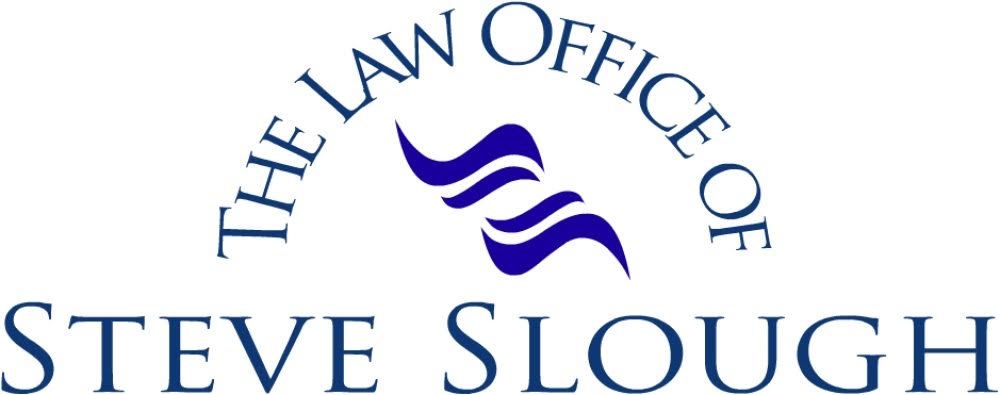When a product fails to perform safely or as intended, the consequences can be devastating. Victims may face serious injuries, permanent disabilities, or overwhelming financial losses, and defective product claims often involve detailed technical, scientific, and medical details that go far beyond ordinary knowledge.

Key Elements of a Successful Medical Malpractice Claim
Medical malpractice can be one of the most stressful and emotional experiences a person faces. When you or a loved one suffers harm due to a medical professional's mistake, the emotional and financial impact can be overwhelming. Filing a medical malpractice claim requires careful preparation and attention to detail.
At The Law Office of Steve Slough, we understand how devastating these situations can be. Here, our Clayton, MO medical malpractice attorney will explain the key factors that can make a significant difference in the outcome of your case. If you or a loved one have experienced harm from a healthcare provider, reach out to our firm today for guidance and support.
Patient Injury and Damages
One of the most important elements of a medical malpractice claim is showing that the patient suffered harm. Without proof of injury or damages, a claim typically can’t move forward. To build a solid case, it's crucial to document the full scope of harm caused by the alleged medical error. Key points to consider when documenting injury and damages include:
Medical records: Collect all relevant records, including hospital notes, test results, prescriptions, and discharge summaries.
Photographs or videos: Visual documentation of injuries can provide compelling evidence of physical harm.
Witness statements: Accounts from family members, caregivers, or other medical staff can help establish the impact of the injury.
Financial impact: Keep records of medical bills, lost wages, and other expenses related to the injury.
Emotional and psychological effects: Mental health treatment, therapy sessions, and personal journals can demonstrate the non-physical consequences of the malpractice.
By thoroughly documenting the injury and its effects, clients give their case a strong foundation. This process helps support claims for compensation and illustrates the real-life impact of the medical mistake. Accurate and detailed records also make it easier for lawyers and medical evaluators to clearly present the case to insurers or in court.
Breach of Duty
A critical component of any medical malpractice claim is proving that the healthcare provider failed to deliver care that met accepted standards. This is called a breach of duty. Healthcare providers are expected to follow professional standards and protocols when treating patients. When analyzing a potential breach of duty, consider these factors:
Standard of care comparison: Review guidelines and protocols that apply to the type of treatment received.
Professional conduct: Look at whether the provider followed accepted medical practices.
Timing and response: Examine if delays or mismanagement in care contributed to the harm.
Communication lapses: Identify situations where the provider failed to give proper instructions or explanations.
Medication errors: Document any mistakes in dosage, prescription, or administration of medicine.
Identifying a breach of duty strengthens a claim by linking the provider’s actions to the resulting harm. Proper documentation and expert analysis can clarify how the breach occurred and why it led to injury. Clearly showing the breach also helps demonstrate to a jury or insurer that the provider failed to meet the expected standard of care.
Causation Between Negligence and Injury
Even if a breach of duty is evident, a successful medical malpractice claim requires proving that the negligence directly caused the injury. Establishing this causal link is often one of the most challenging aspects of a case. It's not enough to demonstrate a mistake; you must connect the mistake to the actual injury suffered. Key points to help demonstrate causation include:
Medical expert testimony: Professionals can explain how the breach of duty caused specific injuries.
Timeline of events: Documenting the sequence of care and harm helps establish the link between negligence and injury.
Diagnostic evidence: Tests and scans can show how the injury developed following the alleged malpractice.
Consistency in records: Clear, consistent medical records reinforce the connection between actions and outcomes.
Alternative explanations: Address other factors that could have caused the injury to strengthen the argument that negligence was the primary cause.
Proving causation solidifies the foundation of a claim and is crucial for recovering damages. It shows that the injury wasn’t merely coincidental but directly tied to medical malpractice. Establishing this link also helps determine the scope of compensation a client may be eligible to receive for the harm that resulted from the negligence.
Timely and Accurate Documentation
Documentation plays a vital role in any medical malpractice claim. Detailed and accurate records provide evidence to support the claim and clarify the sequence of events. Without proper documentation, it becomes difficult to prove negligence, causation, or damages.Important documentation to gather includes the following records:
Treatment records: Hospital, clinic, and physician notes.
Medication logs: Records of prescriptions, dosages, and administration.
Insurance statements: Documentation of claims and reimbursements.
Personal journals: Notes from the patient or family detailing symptoms, treatments, and progress.
Correspondence: Emails, letters, or messages exchanged with medical staff or facilities.
Accurate documentation provides a clear narrative of what occurred and helps strengthen arguments for compensation. Keeping thorough records can make a significant difference in the success of a medical malpractice claim. Well-organized records also make it easier for lawyers to identify key evidence and present a convincing case.
Seeking Professional Evaluation
Medical malpractice claims often benefit from professional evaluations. These assessments can clarify the nature of the injury, the breach of duty, and the connection between the two. While it can be difficult to obtain these evaluations, they’re often essential for a strong case. Factors to consider when seeking professional evaluation include the following:
Specialty alignment: Choose a professional familiar with the type of injury or treatment involved.
Independent assessment: An evaluator without ties to the healthcare provider offers a neutral perspective.
Detailed report: Look for comprehensive explanations that outline cause, effect, and long-term implications.
Historical review: Evaluators should examine past medical history to account for preexisting conditions.
Support for testimony: Professional evaluations can serve as the basis for expert testimony in legal proceedings.
Having a professional evaluation can strengthen your claim by providing objective evidence that supports your account of the injury and the provider’s breach of duty. It can also help clarify the extent of the injury and potential long-term effects. Additionally, professional evaluations lend credibility to the claim when presenting it to insurers or in court.
Statute of Limitations and Legal Timelines
Every medical malpractice claim must comply with strict legal timelines. Filing too late can prevent a claim from being considered, regardless of its merits. Understanding these timelines is critical for protecting your rights, and makes sure that legal action can proceed without unnecessary hurdles. Key points regarding timelines include:
Filing deadlines: Missouri typically requires filing within two years of discovering the injury.
Discovery rule: The clock may start when the injury is discovered, not when it occurred.
Minor exceptions: Certain circumstances, such as minors or delayed discovery, may extend filing timelines.
Pre-filing requirements: Some claims require notices or preliminary reviews before court filings.
Legal counsel consultation: Early consultation with a lawyer helps track deadlines and prepare necessary documentation.
Paying attention to legal timelines protects your ability to pursue compensation. Missing a filing window can end a claim before it even begins, so prompt action is essential. Working with an experienced personal injury attorney is essential in these situations.
Speak With a Lawyer Today
Medical malpractice claims are challenging, but understanding the key elements can increase the likelihood of a successful outcome. From documenting injuries to demonstrating negligence and causation, every step matters in building a strong case. If you or a loved one has suffered harm due to a medical professional's mistake, you don’t have to face this alone.
At The Law Office of Steve Slough in Clayton, Missouri, we help clients in St. Louis, St. Louis County, and St. Charles County, Missouri, as well as those located in St. Clair County and Madison County, Illinois, through these difficult situations. We’ll guide you in gathering evidence, connecting with professionals, and meeting legal requirements.
We can help you understand your options and take the next steps forward. Don’t wait—contact our firm today for assistance with your medical malpractice claim.
RECENT POSTS
Medical malpractice can be one of the most stressful and emotional experiences a person faces. When you or a loved one suffers harm due to a medical professional's mistake, the emotional and financial impact can be overwhelming. Filing a medical malpractice claim requires careful preparation and attention to detail.



